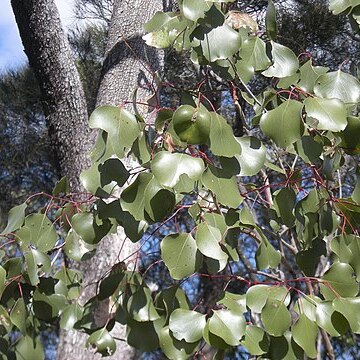A medium to large tree. It grows 10-20 m high. It spreads 5-12 m wide. The bark is grey and flaky. It has a single trunk and a spreading crown. The leaves are dense and glossy. The adult leaves are egg-shaped or broadly sword shaped. They have a short point. The leaves are 5-10 cm long by 2.7-5 cm wide. The flowers are white or cream and occur in bundles or 7-15. They are 0.8 cm across. The fruit is a capsule 2-4 mm wide.


